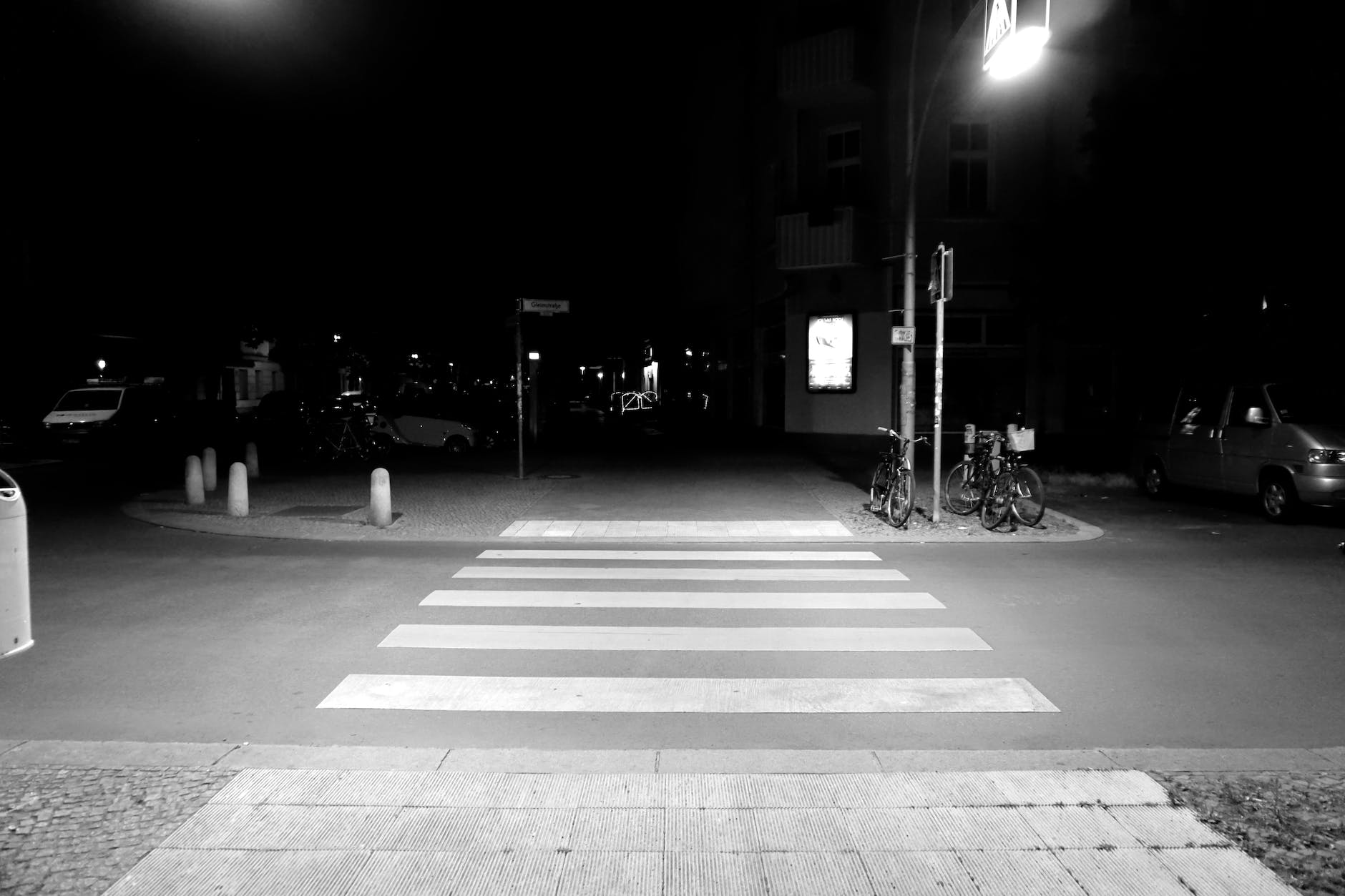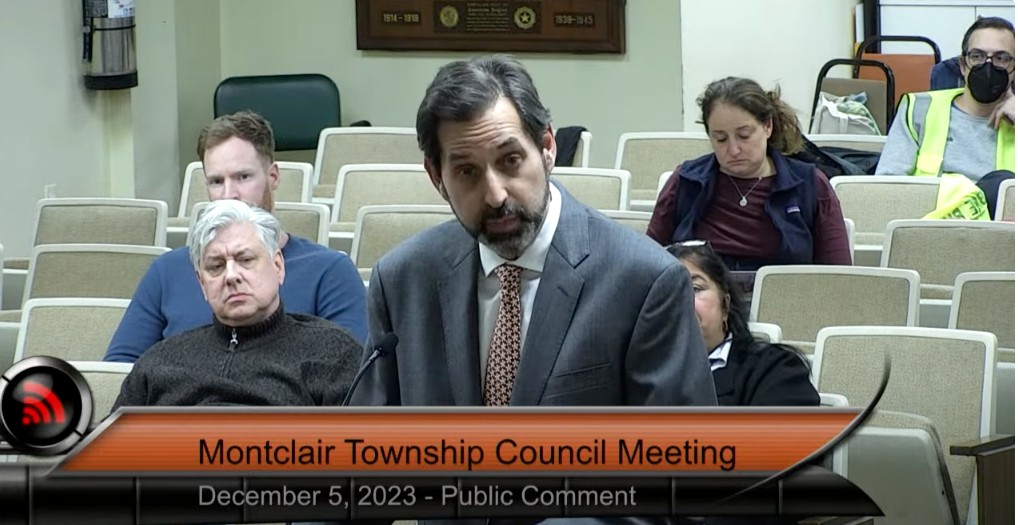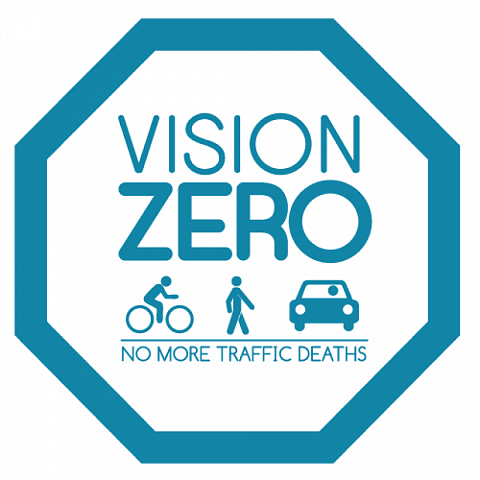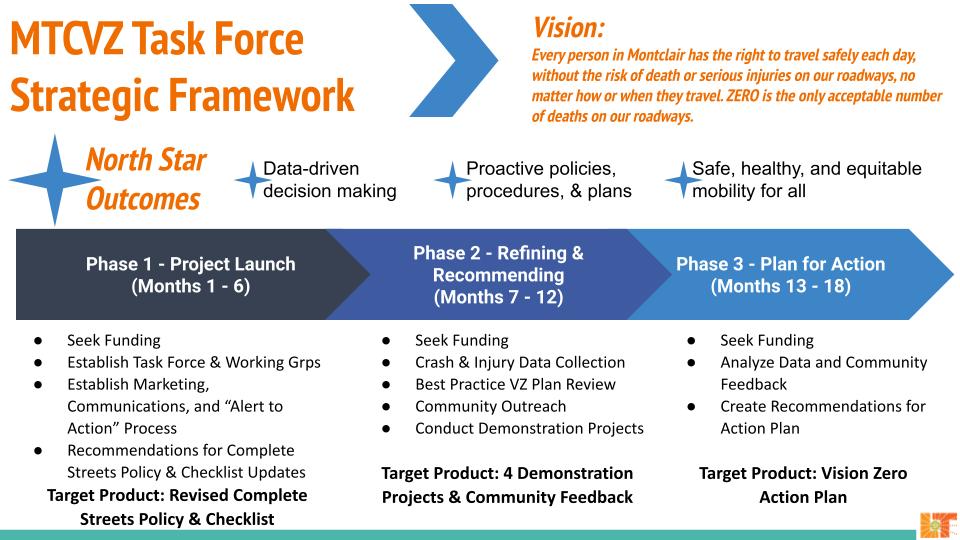
Introduced in May, Montclair’s Vision Zero Task Force, who had its first meeting on November 9, has yet to deliver on its promise, according to residents.
More than a dozen residents shared their concerns, fears and frustration at Tuesday’s council meeting, calling for additional stop signs, improvements to crosswalks and street lights, and making dangerous intersections safer for pedestrians. But it was the voice of David Folkenflik, who shared the tragic loss of his mother Vivian, killed at the intersection of Bellevue and Park Street, who underscored the urgency of making Montclair streets safer now.
“A few days before Halloween, she was killed by a pickup truck, an enormous one whose driver accelerated into her. She was walking in a pedestrian crosswalk in Upper Montclair with the light, a bit past noon on a perfect fall day. She did not stand a chance,” said Folkenflik, addressing the council Tuesday. “Five times before her death, I called and emailed to express mounting concerns about the collisions at that intersection, and the reckless driving at the neighboring one where my kids get picked up for school. Over the years, we’ve ensured that motorists can get through town smoothly instead of making sure everyone can go about their lives safely.”

Folkenflik called for the township to immediately seek grants for infrastructure projects from county, state and federal sources before the money goes away.
“I applaud tonight’s vote to lower some speed limits, and that’s promising. But this has to be about more than setting and enforcing tighter laws,” Folkenflik said. “This requires rethinking how we set priorities. A lot of places have done a lot better with fewer resources than we command here. I have great hopes for the Vision Zero Task Force, great hopes, and yet we cannot wait for them to reach consensus before anything ambitious is done.”
Folkenflik shared that his sister was killed 28 years ago by a drunk driver.
“I have three daughters and I have no more lives left to give,” said Folkenflik. “If we take no initiative until the task force work is complete, what do you say to those who were hurt or worse in the mean time?”
Interim town manager Michael Lapolla told Folkenflik he had met with the police chief, the deputy chief, and the engineering department to discuss the intersection where the tragedy occurred.
Lapolla said when they looked at the infrastructure at the intersection to see if they could add some safety measures for pedestrians, they learned the entire structure was built incorrectly.
“It’s antiquated and can’t be upgraded,” said Lapolla, adding that the cost to replace it would be upwards of half a million dollars. “I can assure you it will be in the next capital budget. It may be just a small step, but to make sure that intersection ultimately will be safer for the people who cross there.”
Action Is Needed
Other residents called for Township to do more and leverage available grants. Mariana Horta spoke of a missed opportunity, when the Township would not provide a grant writer to provide additional details for a federal grant that had already been written for Safe Routes to Schools.
“You owe us every penny we could have got from that grant” Horta said. “You say you’ve implemented Vision Zero but you haven’t until we have dedicated bike lanes and street safety first.”
Melanie Robbins, accompanied by her son Ezra, also raised concerns about safety issues in their Walnut Crescent neighborhood and called for more action to safeguard Montclair streets: “We require funding and staffing to kick-start this project now, before more people are killed. This responsibility falls on someone in the town, not on me.”
“I understand the purpose of Vision Zero but there are things that are obvious that can be done now,” said Patrick from Upper Mountain Avenue. “I really think it’s important for the town to not wait for Vision Zero but instead use this budget cycle to start taking actions to change the engineering of our roads.”
Vision Zero Gets Started
Montclair was inspired by Hoboken, where, thanks to implementation of Vision Zero, there have been no pedestrian fatalities for more than six years.
“No serious injury or death is acceptable on our roads,” said Laura Torchio, chair of Montclair’s Vision Zero Task Force. “There’s no magic number. Zero is the only acceptable number here,” she added.
The five-year plan seeks to eliminate all traffic-related and pedestrian and bicycle crashes by 2028.
The Montclair task force is composed of 23 individuals, including Mayor Spiller and Councilor Lori Price Abrams. A replacement to fill the spot previously held by Peter Yacobellis is pending.

At the task force’s inaugural meeting on Nov. 9, Price Abrams and Essex County Commissioner Brendan Gill attended along with representatives from police and township departments, the senior citizen and people with disabilities communities, two students from Montclair High School, and members of Bike & Walk Montclair.
The task force will work on gathering crash, injury and speed data and map out hotspot zones in Montclair. Road projects that are currently in the pipeline will also be studied and if they correlate with high crash areas, recommendations to those projects will be made.
Montclair was the first municipality in New Jersey to have a Complete Streets Policy introduced in 2009. During the first six months, the task force plans on updating this policy.

The task force will focus on three phases spanning 18 months. Phase one involves pursuing funding and forming working groups while phase two and three will focus on data collection, community outreach and recommendations.
At Tuesday’s council meeting, Councilor Bob Russo questioned whether the task force was fully funded.
“We have not put the funding in place for the Vision Zero Task Force to work” stated Russo at the meeting. “I keep asking the manager where the funding is for this program to work.”
According to Lapolla, the first phase has been funded by the Montclair Center BID and the rest will be funded in the next budget. Torchio is hopeful that the task force will be awarded the ‘Safe Streets and Roads for All’ grant when awardees are announced and said the monies could possibly fund all three phases.
The next Vision Zero Task Force meeting is scheduled for December 8 where members will discuss the phases and implementation of working groups.

This task force is already off to a very bad start in so many ways. The V0TF formal charter live in late June with an 18 month Sunset provision – Dec, 2024. They are now 4 month behind. Fine. The next council can extend them. They were funded $25,000 in seed money for 2023 for which we have a minimal return. They are excusing themselves from OPMA & OPR obligations as I expected. They are not committed to streaming meetings. They are already asking for serious local, State & Federal monies but eschew all transparency. They are emphasizing message control like a political campaign. Serious public good advocacy would have readily embraced these free & immediate engagement choices. Does anyone know what the previous Council TF’s achieved. Did we have any hindsight?
I totally understand the frustration of residents. It will just grow with the next accident. We are going into the Winter weather season with the shortest days of the year for the next 3 months. They plan on using the next 6 months to update their policy flash cards!
This is a cluster of a project management design – objectives, deliverables and plodding. The Ward Councilors need to return to their Community Meeting format and more frequently. Each Ward Councillor should independently own their ward’s project compilation list, prioritization and costs. They are going to vote on it anyway. To use a subset of the Council as liaisons is not a responsive model. Political time horizons are much shorter than infrastructure lead-times.
Not our best effort.
PS: Oh, and how to lose your audience: The V0 advocates, in back to back Council mtgs, that willingly volunteered being irresponsible with the care of their dogs resulting in their pet’s injury & death from vehicles? Downplay your accountability for your pets well-being & protection, but then relate these tragedies to a public safety problem? They might want to reconsider stepping back from their V0 advocacy roles.
The V⊘TF is an advisory body to the Council alone, created to compile, evaluate, advise & recommend. The V⊘TF Chair is a paid consultant. The Council did not restrict themselves to just this resource. V⊘ is a policy first. The Council owns policy.
Public policy is dynamic. Evolving. Decisions are constant. Bad decisions will happen. Then we just make new decisions to correct. There will be instances where the detriments ‘outweigh’ the benefits. The question in the case of quick & well reasoned “fixes” is whether any short-term downsides mistake (e.g. congestion) can negate the upsides, as minimal as the number may be?
My point being the Council should get lead from the front of, take some risks, and drive the implementation of a Top 10 list of 180 day, or sooner projects. Then the next 10. We can save the million+ dollar decisions for Day 181 and beyond when the V⊘TF is up to speed.
Oh, and start with my 5 items I posted under Dave’s column.
The Township fulfilled my OPRA request, on time, for the VøTF grant application that promises $438K of Federal funds late next year. I received 3 pages. Appears 3 pages is enough to get $438K.
I get there is a a blah, blah, blah obligation in writing grants. Even when the Federal government’s application requirements here are like during COVID. It was pretty decent blah, blah. The Aubrey Group’s hand?
What unnerved me after reading the Township’s application is the future ability of the VøTF to collect, maintain & analyze the data driving their work. Why?
There were 3 obvious numerical calculation errors, over a 3 page application. The 3 pages submitted by the Township for Federal review.
First, the application managed to badly miscalculate the actual deaths/100,000 residents over the last 5 years. This one was sad considering the name and purpose of the task force. Second, the application confused fractions and percentages in applying to our population. Lastly, the application didn’t check its calculated funding totals.
Mistakes happen. Proofing should happen. I know. But, the careless mistakes here indicate someone that doesn’t relate well to numbers. These are errors in basic arithmetic. This does not bode well for the substantially larger data sets and more complicated calculations the VøTF will be responsible for.
PS: The Aubrey Group, grant writers to the town, appears to be getting from the Council the contract for the Clary Anderson Arena study. Grant writers that can skate!